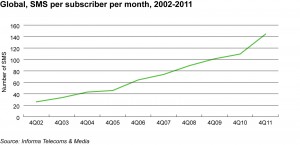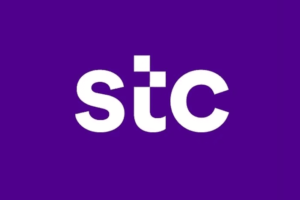Monday, December 3 marks the 20th anniversary of the first sending of an SMS in 1992, when the young Sema Group test engineer Neil Papworth texted “Merry Christmas” to Vodafone UK employee Richard Jarvis, over Vodafone’s GSM network.
 Within 12 months, several European operators had launched SMS. TeliaSonera Sweden was the first to offer a commercial, network-based SMS voice-mail notification service in 1993, and Radiolinja Finland (Elisa) was the first to provide commercial person-to-person SMS.
Within 12 months, several European operators had launched SMS. TeliaSonera Sweden was the first to offer a commercial, network-based SMS voice-mail notification service in 1993, and Radiolinja Finland (Elisa) was the first to provide commercial person-to-person SMS.
However, it took a few more years for SMS to reach critical mass, owing to a combination of factors, including insufficient support for SMS natively in handsets, the inability of mobile operators to set up billing systems for SMS that were also fraud-proof, and the lack of SMS interoperability between mobile operator networks.
But by the early-to-mid 2000s, the mobile communications industry had collectively worked to address these problems and SMS was on a roll; in 200,2 mobile subscribers around the globe sent more than 250 billion SMS messages, according to Informa Telecoms & Media.
Changing consumer habits
SMS was initially used mainly for notifications, such as voicemail notifications, before it was adopted on a massive scale in the youth market for person-to-person messaging. Younger mobile users quickly found that mobile operators were deliberately pricing SMS more cheaply than voice calls, in order to drive take-up and use. But they also liked being able to send messages that did not need an immediate response and, as interoperability between mobile operator networks grew, they liked knowing that they could reliably send texts to friends on different networks.
SMS pricing has since played a key role in mobile users’ adoption and use of the service. Inexpensive plans that included large bundles of SMS or unlimited SMS meant that all consumers – and not just the youth market – became pretty much unconcerned about how much their messaging cost. The mobile operators that introduced such plans soon reaped the rewards in terms of increased SMS revenues and traffic.
Battle for survival
But SMS is in a fight for its life in some markets as it finds its role as a mobile communications service is usurped by free messaging services, such as WhatsApp, iMessage, Viber, KakaoTalk and Facebook Messenger.
The concern for mobile operators is that the malaise that SMS faces in countries such as the Netherlands, Spain, China, South Korea and the Philippines – where SMS traffic and revenues are in decline – will inevitably spread, as the penetration of smartphones and mobile broadband grows.
What’s next for SMS?
But by no means is it all doom and gloom for SMS. Indeed, SMS traffic continues to grow year-on-year globally, according to Informa Telecoms & Media: In 2012 Informa forecasts that global SMS traffic will increase to 6.7 trillion messages, representing a year-on-year increase of 13.6{e1f18614b95d3cd6e4b3128e1cd15d99b042a60a5a19c19b7a8e07e7495efa10}, up from 5.9 trillion messages in 2011. That global growth is set to continue: Informa forecasts SMS traffic will total 9.4 trillion messages in 2016, and will generate US$127 billion in revenues.
Also, in emerging markets in Africa, Asia and Latin America, the penetration of smartphones, mobile broadband and home-based Internet-enabled computers is relatively low. Consequently, SMS has become an essential service for communications and for enabling services such as mobile banking and payments, and the dissemination of information that is of vital importance to the promotion of health, safety and economic development. SMS is increasingly being used in innovative and imaginative ways in these markets.
Overall, the future remains bright for SMS, if only because it will be some years before free messaging applications can achieve the same level of penetration as SMS. The penetration of smartphones and mobile broadband represent barriers to entry for consumers, as does the lack of interoperability between the OTT offerings.
April 24, 2025











